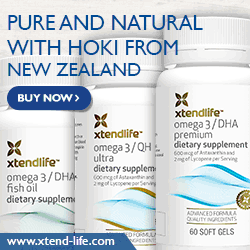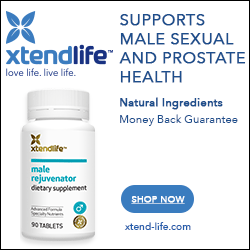Dysfunctional Foods
I took the Special K Challenge this morning…the link caught my eye during a Google search, and I couldn’t resist. Special K is a real blast from the past: I recall the old “pinch an inch” ads from daze gone by. Can’t say I ever ate the stuff much, however. Didn’t really care for the taste, to be honest, plus, I had a hard time figuring out what was really “special” about it from a weight loss perspective…it had roughly the same calories and nutrients as other packaged cereals did.
At any rate, the “Challenge” is to lose 1 inch off your waist in 2 weeks by following a “personalized” nutrition plan devised by the Marketing Department at Kellogg’s. To create my plan, I had to answer three multiple choice questions, none of which concerned my height/weight, age, activity, amount of (hypothetical) excess weight I wanted to lose…or any other info that you’d think would be important. The questions were all subjective, like “What’s the worst part of a diet?” I thought that was a bit odd, so I submitted the questionnaire several times, using different answers. Sure enough, each submission resulted in a “personalized” plan that was structurally identical to the first one. And what a plan it was, too! Here’s a sample day:
Monday
Breakfast: Chocolatey Delight Cereal
Snack: Special K20 Tropical Blend Protein Water
Lunch: Strawberry Protein Meal Bar
Snack: Chocolate Peanut Protein Snack Bar
Dinner: Your Choice
Tuesday – Sunday varied from this only in the sequence of the snacks (sometimes the Snack Bar came first and the Protein Water second), and the flavors of the products used. For example, in addition to the original Special K cereal of my youth, I could now choose from “Cinnamon Pecan,” “Red Berries,” “Vanilla Almond,” “Fruit and Yogurt,” “Protein Plus” or the afore-mentioned “Chocolately Delight” for breakfast. In fact, Kellogg’s has a cereal flavor for each day of the week. This may be a coincidence, but looking at my “diet” plan, I tend to doubt it…they didn’t miss a one. My two week plan featured pretty much every flavor of each Special K product.
This isn’t a “diet” – it’s a marketing ploy. It’s a perfect example of what Paul calls “crapitilism.” Just like the “Slim Fast” plan, the whole thing revolves around the consumption of unnecessary, highly processed, “functional food” products for most of the meals, with token amounts of real foods thrown in for the fiber and variety…and also to keep you from going completely insane from hunger, I guess.
Functional foods are a big deal in the food industry these days. The Institute of Food Technologists defines functional foods as foods/products that:
“…provide essential nutrients beyond quantities necessary for normal maintenance, growth, and development, and/or provide other biologically active components that impart health benefits or desirable physiological effects.”
Some new ones on the market include items like omega-3 eggs, and “heart healthy” nutrient-enriched orange juice. Products like these are useful, generally nutritious, and may offer some health benefits above and beyond the regular versions. But what can we say about a product like this???
Special K “Double Chocolate” Meal Bar:
Coating (sugar, partially hydrogenated palm kernel oil, cocoa processed with alkali), whey, nonfat milk, soy lecithin, sorbitan monostearate, salt, polysorbate 60, artificial flavor, soy protein isolate, corn syrup, inulin, fructose, rice starch, polydextrose, sugar, chocolate flavored chips, (sugar, partially hydrogenated palm kernel oil, cocoa, cocoa processed with alkali, sorbitan monostearate, polysorbate 60, soy lecithin, salt, artificial flavor), chocolate, cereal (rice, wheat gluten, sugar, defatted wheat germ, salt, high fructose corn syrup, whey, malt flavoring, pyridoxine hydrochloride [vitamin B6], folic acid), dextrose, contains 2% or less of calcium carbonate, butter (cream, salt), glycerin, sorbitol, natural and artificial flavor, salt, soy lecithin, ascorbic acid (vitamin C), alpha tocopherol (vitamin E), xanthan gum, niacinamide, zinc oxide, reduced iron, pyridoxine hydrochloride (vitamin B6), vitamin A palmitate, riboflavin (vitamin B2), thiamin hydrochloride (vitamin B1), BHT (preservative), egg whites, pecans, almonds, wheat flour, peanuts, vitamin B12, folic acid, vitamin D.
Like the above examples, this is a “value added” functional food. But instead of being an enriched version of an already fairly nutritious product (i.e., eggs, orange juice), it’s enriched junk food. In essence it’s a “value added” candy bar: you get a paltry 10g of protein, some fiber, and anywhere from 4% to 20% of the RDA for basic vitamins and minerals. The only other difference is that it’s smaller than a standard candy bar (1.59 oz. vs. 2.1 oz) – you could eat one in three bites. Not too satisfying, in my opinion.
Products like this belong in a new category: “dysfunctional foods.” They may be an improvement on junk food, but are no replacement for real food – which is what a healthy weight/fat loss program should be based on.
Could you lose weight on a program like this? I imagine so…I toted up all the cals and macronutrients in my “personalized” meal plan above (minus dinner), including 2/3 c. skim milk, a medium banana, an orange, 4 oz. baby carrots and a large apple – as encouraged in the plan. It came to a meager 862 calories, 31 g protein, 173 g carbohydrates and 13 g fat. Even worse, 108 g of those carbs (62%) come from sugar (added and naturally occurring from the milk, fruits and carrots).
I dunno about you, but I’d be dying on a plan like this. I eat about 31 g protein in a single meal…I can’t imagine eating so little over the main part of the day – when I’m expending a maximum amount of energy.
If you have some excess weight/fat to lose, this isn’t the way to go about it. It may seem simple and convenient, but it’s far from optimal. You’ll be much better off if you skip the dysfunctional foods – and the “diets” based on them – and eat real food instead.




May 22, 2008
Unbelievable! The same meal plan and caloric intake regardless of size, weight, height, muscle mass and activity level? And the same plan regardless of entered data?
You’d think Kellog’s would at least make an effort to maintain the pretense that this is a “real”, genuine diet plan.
Obviously, their real priorities lie with the bottom line and their shareholders. This isn’t real food — not by a long shot. You nailed it, Elissa, with “value added candy bar.”
I say again…
Un-freakin-believable.
May 22, 2008
LOL – submitting different answers to the questions generated different diets in a strict technical sense, but they were all functionally the same, in that they featured cereal for breakfast, snack bars/bites/protein water for snacks, and meal bars for lunch. So different flavors were used, but each diet had the same, precise structure…thus the phrase, “structurally identical.” The program simply randomizes the products assigned to each group (i.e., breakfast, snack1/2, lunch) when you submit a questionnaire.
May 22, 2008
The average consumer wants to find a no brainer health-in-a-box package that will magically help them fit their pants again in a few weeks so they just go through the same cycle again.
It’s too bad most won’t be finding this site or even looking for it as the ads will educate them instead.
Elissa, I happen to know how you look which is FABULOUS!. So please don’t take too many of these experiments as a sacrifice to help the “masses” out there.
May 22, 2008
ROFLMAO! No, I wasn’t going to actually go through a real two-week program (I don’t have any surplus fat around my waist to lose, really). All I did was pick up some samples at the store – fortunately, the bars were being sold open stock, so I didn’t have to buy a full box. But I didn’t eat them (my daughter expressed curiosity, so they ended up being hers). I just bought them to get a look at them, and to get the list of ingredients, which Kellogg’s didn’t put on their site (the info is N/A – I wonder why? :-D)
I did drink the Protein Water, though, to see if it really does “take the edge off hunger.” I was a bit peckish coming out of the grocery store, so I sucked it down in the car, and took note of the time. It wasn’t particularly tasty (to me, at any rate), although it did take the edge off my hunger…for a grand total of about 30 minutes – lol.
This is unsurprising, as it contains only 5 g whey protein isolate and 5 g of polydextrose (plus 6 g sugar)…it’s only 50 calories worth, and polydextrose isn’t a big deterrent to gastric emptying. The satiating effect of polydextrose was referred to as “mild” in this study: http://journals.cambridge.org/download.php?file=%2FBJN%2FBJN93_06%2FS0007114505001376a.pdf&code=a52be35023259bde00828a47df480146 – which used a dose of 12.5g – 25 g – considerably more than what Kellogg’s provides!